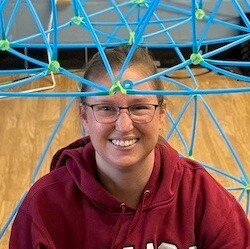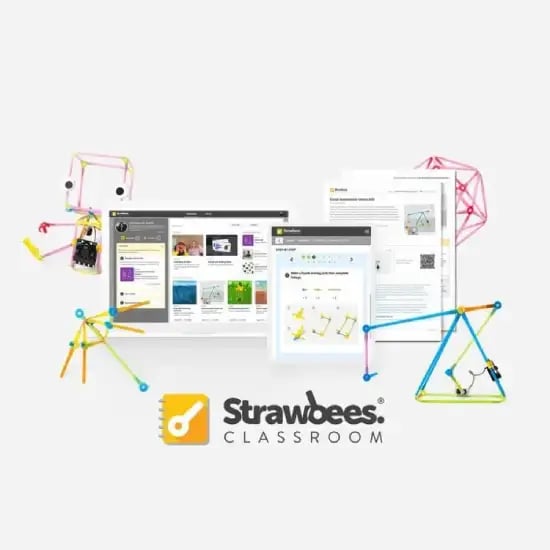Strengthening Core Academic Foundations
Mathematics and science are the foundation of STEM education, providing students with essential problem-solving, analytical, and research skills.
Integrating STEM into math and science departments enhances student engagement, fosters real-world applications, and prepares learners for advanced academic and career pathways.
Schools that incorporate hands-on STEM activities in these subjects create dynamic learning environments that develop critical thinking and innovation.
Three Key Benefits of STEM in Math and Science Departments
There are many reasons to implement STEM in Math and Science Departments but we've highlighted three primary reasons below including enhancing real-world problem-solving skills, fostering interdisciplinary learning, as well as preparing students for advanced STEM careers.
Main Reasons to Implement STEM:
Enhancing Real-World Problem-Solving Skills
What we know:
- STEM-based math and science curricula connect abstract concepts to real-world applications, improving student comprehension and retention.
- Hands-on experiments and engineering challenges help students develop inquiry-based learning skills.
- Research from the National Science Teaching Association (NSTA) emphasizes the importance of active learning in improving student outcomes.
Fostering Interdisciplinary Learning
What we know:
- Math and science integration with technology and engineering fosters cross-disciplinary thinking, essential for innovation.
- STEM initiatives such as a coding in math or physics-based robotics projects enhance engagement and creativity.
- Studies from Edutopia show that interdisciplinary STEM approaches improve critical thinking and problem-solving abilities.
Preparing Students for Advanced STEM Careers
What we know:
- Math and science literacy are crucial for careers in engineering, data science, medicine and technology.
- Project-based learning and STEM competitions provide students with hands-on experience that strengthens college and career readiness.
- The U.S. Bureau of Labor Statistics report significant job growth in STEM-related fields, underscoring the need for strong math and science foundations.
STEM-Driven Math and Science Departments
Strawbees has partnered with math and science departments to introduce hands-on learning tools that bring abstract concepts to life.
By using Strawbees tools in coding challenges and computational thinking exercises, schools have transformed traditional computer science courses into interactive learning experiences.
Topeka Public Schools
With a rich background in education and technology, Jess Blouvan, Tech Specialist at Topeka Public Schools had the experience to identify tools that were designed for educational purposes, not just repurposed toys.
"You have to be a very goof steward of the money and resources that you get and so when you're choosing STEM tools, it's really important that you're getting really good value and not just financial value."
What Teachers Say
Here’s what math and science teachers are saying about their experiences:
“A lot of the other products available are huge and difficult to work with. But Strawbees is so simple. All you have to do is use the micro:bit. It's easy!"

Hala Rivera Rentas
Computer Science Teacher at Pasco County Schools
“I could not believe how quickly 4th - 6th graders went from just learning about Strawbees and struggling a bit at first to try and find their groove, to building this huge pyramid out of 64 smaller pyramids."

Chris Brown
Media Center Teacher at Utica Community Schools
"I think sometimes we forget that middle schoolers like to have fun too. Strawbees allowed them to blend play with learning."

Melissa Zeitz
Digital Literacy and Computer Science Teacher
Strawbees Classroom
Strawbees Classroom includes a variety of lessons for different grade levels, including anything from building basic shapes to using micro:bit to code a plant that responds to light. Strawbees Classroom is free to sign up for and explore, whether you have Strawbees just yet or not. To explore the lessons and teacher resources, you can join today.
STEM in Maths and Science
Finding funding for STEM and STEAM education can be challenging, but there are a range of grants and funding sources to support hands-on learning initiatives for maths and science departements.
Many states offer grants to enhance STEM instruction in math and science classrooms, providing funding for curriculum development, teacher training, and equipment purchases.
Some useful resources include:
National organizations fund STEM programs that integrate hands-on math and science learning, supporting schools in fostering STEM literacy.
Examples of national-level grants include:
How We Can Help with Grant Applications
If you're looking for funding to bring hands-on STEAM learning to your students, we do have a grant writing webinar you can watch to help support you.
Next Steps
Integrating STEM into math and science departments enhances student learning, fosters interdisciplinary connections, and prepares learners for future academic and career success.
By utilizing project-based learning, real-world applications, and available grant funding, educators can make STEM education more impactful.
At Strawbees, we provide innovative tools that support hands-on math and science education. Explore our STEM solutions to enhance learning in your school today!


